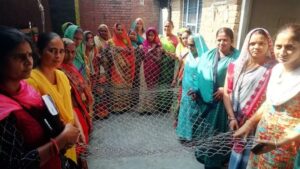A prototype for a device to maintain oxygen pressure that works without electricity has been developed by the Indian Institute of Technology Ropar (IIT-Ropar) in Punjab’s Rupnagar.
Named ‘Jivan Vayu’, this device, if produced on a commercial scale, can be a major development for the oxygen supply mechanism for patients in areas with frequent power cuts.
The device can be fitted to both oxygen cylinders as well as the centralised oxygen supply pipelines in the hospitals.
Also Read: Maya Vishwakarma’s telemedicine centre is reaching out to the sick in rural Madhya Pradesh
“This was the need of the hour during the present Covid pandemic when power supply is the key concern for saving lives of those on medical equipments such as ventilators and oxygen concentrators”, said Khushboo Rakha, Assistant Professor, Department of Metallurgical and Materials Engineering.
‘Jivan Vayu’ is Rakha’s brainchild.
“It has an inbuilt viral filter at the air entrainment end which has a viral efficacy of 99.99%”, she added. It is informed that the viral filter ensures that the air does not bring in any pathogens from the environment. Also, the device has been manufactured using 3D printing and has also been mechanically tested.
Also Read: Cancer survivor’s telemedicine centre links medics with villagers in remote areas
A COVID19 patient needs oxygen support when shortness of breath becomes acute due to the viral infection in the respiratory tract.
The artificial supply of oxygen has proven to be beneficial in the treatment of COVID19 cases as ensuring oxygen to the body helps it recover from the infection and stay put while the body fights the infection.
“Fulfilling all the medically required parameters, this leak-proof, low-cost CPAP delivery system, ‘Jivan Vayu’ is designed for a 22mm CPAP closed circuit tube. It can even be customized as per the size of the tube. Since it can run during power failures, this can be used to safely transport a patient,” the Press Information Bureau (PIB) said in a statement.
‘Jivan Vayu’ can deliver high flow oxygen (20–60 litres per minute) while maintaining a continuous positive pressure of up to 20 cm H2O. The device is designed to maintain an FiO2 (concentration of oxygen in the gas mixture) of above 40 per cent with a PEEP (positive end-expiratory pressure) of 5-20 cm H2O.
The PIB press release also mentioned that over 39,000 sub-centers (the first step to access basic healthcare facilities in rural India) serving 230 million people in rural India lack electricity.
The ‘Jivan Vayu’ device can be exceedingly useful in such health centres in rural India.



















